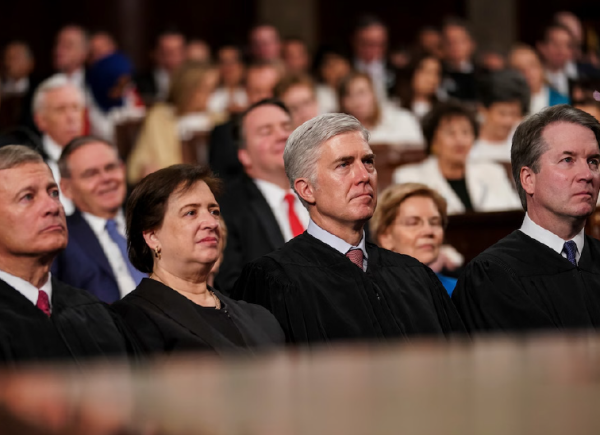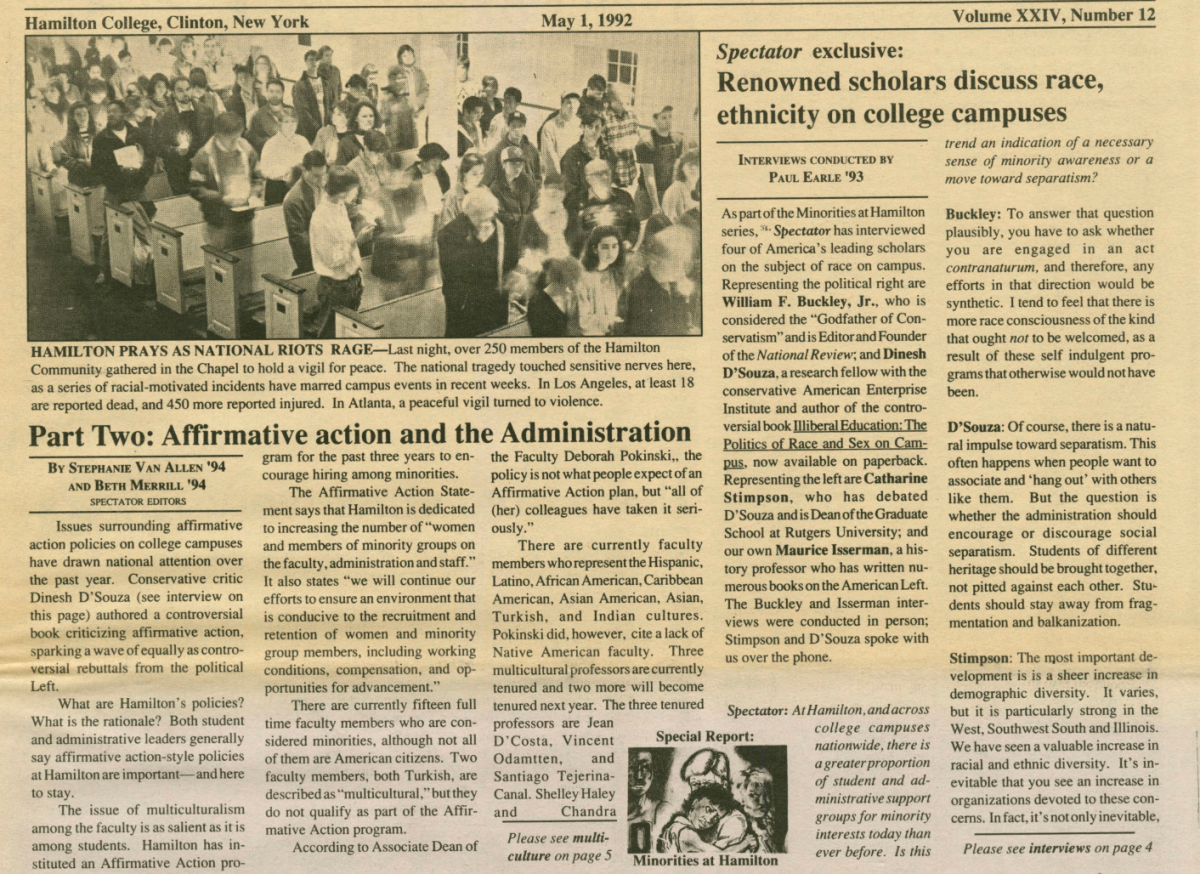
Unlike the other branches of government, the judicial has no enforcement arm. Following SCOTUS rulings regarding checks and balances, the state adheres to the court’s say largely out of precedent and a recognition that public opinion would frown upon an uncooperative government respondent.
Nonetheless, American legal history includes a handful of examples when the state did not adhere to court rulings. Look to Worcester v. Georgia—a SCOTUS ruling that Andrew Jackson simply refused to enforce in 1832. Some historians even claim Jackson said something to the effect of “[the chief justice] has made his decision; now let him enforce it.”
Comments made by the Trump administration underscore recent concerns that the executive could similarly ignore SCOTUS. Vice President JD Vance brazenly expressed that the executive should disregard court-blocks against its small-government agenda—framing his thoughts with Jacksonian rhetoric.
Many have argued that two safeguards against the Trump agenda will be courts and financial markets. Given the enforcement weaknesses of the former, I argue we must look to the latter: namely, to the market for U.S. government bonds.
As a reminder, the U.S. government is able to borrow money by issuing government bonds to the public. A bond buyer gives the government a certain amount of money with the expectation that the government will later repay this sum with interest—this interest is known as the bond’s yield.
Bond yields are, put simply, the cost of borrowing money for the government. They will increase in periods when bond investors might feel they should be compensated more for lending to the government. For example, if they are worried about increasing inflation or the risk of a government default.
In short, bond yields represent the cost of an I.O.U. on the government, and will fluctuate based on investor sentiment. Given this, why would investors care about the White House’s adherence to instructions from SCOTUS? I think the answer is currently two-fold.
First, uncertainty or unexpected changes in governing regimes frighten investors. The private sector generally prefers relative political stability. The threat of vast changes in state structure have pushed bond yields up in several developed European economies over the last decade. In 2018, when Italy’s commitment to the EU came under scrutiny following a government-forming crisis involving Eurosceptic parties, Italian 10-year bond yields increased by 78%. More recently, when France’s government approached collapse in the past year, French bond yields rose to par with those of post-debt crisis Greece—an unprecedented (and rather funny) situation. In both cases, profound uncertainty about the political organization of a country clashed with investors’ risk appetites. This increased borrowing costs for both those governments.
Second, removal of the say of courts from government operations could further lead investors to unwanted exposure to the growth policies of the government. SCOTUS is able to restrict executive and legislative policy on Constitutional grounds. Without the possibility of potential court intervention, investors would face one fewer check against a possibly unfettered, fiscally expansionary U.S. government. Trump’s DOGE team notwithstanding, current policies seem to point to nominal economic growth. Pre-existing real growth across the economy and the administration’s proposals for wide-spread tax cuts only add to the deficit. Ignoring court judgements on the legality of proposed fiscal action can only expand the breadth of these policies. With the administration’s growth policies becoming unencumbered by courts, increasing or irresponsible government borrowing and rampant inflation emerge as more serious risks on the horizon. These pressures would invariably raise government bond yields.
Should the administration ignore SCOTUS rulings, I believe that investors’ disdain for government uncertainty and the increasing possibility for legally unconstrained, red-hot fiscal expansion will push bond yields upwards and hurt the further borrowing ability of the administration. The Trump administration, or any administration at that, might want to think twice about ignoring the court—or risk facing higher borrowing costs for its agenda. This would render the U.S. government bond market a judicial enforcement mechanism.
Ultimately, though, the reactions of U.S. government bond yields to Trump’s actions fall squarely on investor sentiments. Should investors be unbothered by the administration pushing SCOTUS aside, or, should they not foresee the same economic conditions I expect, yields on U.S. paper might not at all strain the government’s borrowing costs. In fact, a handful of big U.S. bond owners—such as BlackRock or the Chinese government—would have to be on the same page for this systematic, reactionary increase in bond yields to take place.
Nonetheless, I propose that collective action in bond markets should not be ruled out. It happened under Clinton to temper fiscal expansion. It might happen under Trump, this time in reaction to his relationship to the judicial branch.
America’s strength is in its markets. Believe it or not, our financial sector is the envy of the world. As is our economy. These days, the country navigates a trepidatious constitutional landscape. How the economy and financial sector react to courts over the next few years might just be the principal determinant of our democratic future.
















